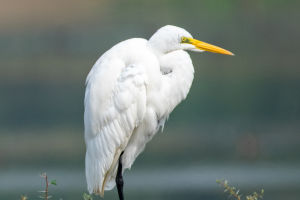The goat (scientific name: Capra hircus) is a domesticated animal that holds the distinction of being one of the earliest animals to be domesticated by humans. With a coat that showcases a plethora of colors, including black, white, grey, and brown, goats are visually diverse creatures.
Their distinctive curved horns can be observed curving both backward and forward, presenting a fascinating aspect of their physical characteristics.
As herbivores, goats primarily sustain themselves by consuming grass, leaves, and twigs.
The history of goat domestication traces back thousands of years, making them one of humanity's oldest companions.
Humans recognized the remarkable versatility of goats, utilizing them for multiple purposes. Initially, goats were primarily bred for their milk, meat, and hides, fulfilling essential dietary and material needs.
Over time, humans discovered additional benefits of these remarkable animals, such as their ability to provide fiber, fertilizer, and even assistance with land clearing.
Goats exhibit incredible adaptability, allowing them to thrive in diverse habitats across the globe.
From rugged mountains to arid deserts, goats have managed to survive and flourish, showcasing their remarkable resilience.
This adaptability is further accentuated by their ability to consume a wide range of vegetation, including low-quality forage that may be inedible for many other grazing animals.
Their efficient digestive system enables them to extract vital nutrients from various plant materials, ensuring their survival in challenging environments.
Furthermore, goats have not only been valued for their utility but have also played significant cultural and religious roles throughout history.
In various cultures, goats are revered symbols of fertility, abundance, and vitality.
Their presence in folklore and mythology further demonstrates their enduring influence on human societies.
Goats are social animals, known for their gregarious nature.
They often form strong bonds with their herd members, exhibiting a cooperative and hierarchical structure within their groups.
This social inclination extends beyond their own kind, as goats have been observed to form companionships with other animals, including horses, cows, and even dogs.
This affable demeanor, coupled with their inquisitive nature, has endeared goats to many people, leading to their presence in petting zoos and animal-assisted therapy programs.
In recent years, the popularity of goat rearing and goat products has witnessed a resurgence.
With an increasing focus on sustainable and environmentally friendly practices, goats have gained attention for their ability to assist in vegetation management and control.
Their browsing behavior aids in controlling invasive plant species, reducing the need for harmful chemicals or mechanical interventions.
Additionally, the demand for goat milk and cheese has risen, driven by the growing recognition of their nutritional value and potential health benefits.
However, despite their numerous attributes, goats face various challenges.
Predation by wild animals, inadequate healthcare, and habitat loss pose threats to their survival.
Conservation efforts and responsible husbandry practices are crucial for maintaining healthy goat populations and ensuring their long-term well-being.
The goat is a remarkable domesticated animal that has accompanied humans throughout history.
Their diverse coat colors, distinctive curved horns, herbivorous diet, and remarkable adaptability make them fascinating creatures.
From their multifaceted utility to their social nature, goats have woven themselves into the fabric of human existence.
By understanding their significance and implementing measures to protect them, we can continue to appreciate and benefit from the incredible contributions of goats to our world.


